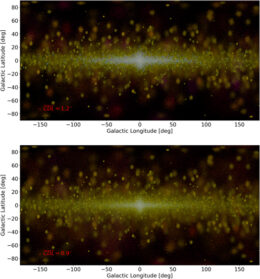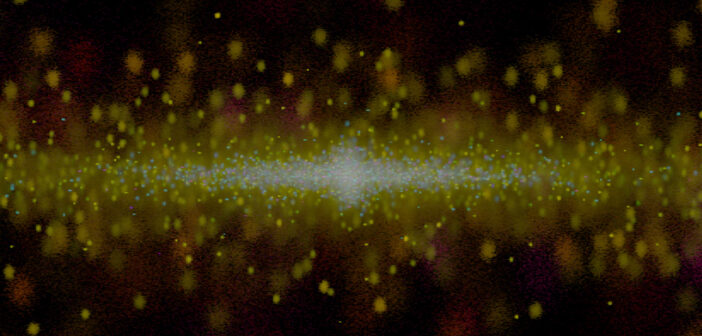
Representative-color gravitational wave images of the Milky Way created with simulated data from LISA (top) and AMIGO (bottom). Click to enlarge. [Szekerczes et al. 2023]
What would our galaxy look like if we could see gravitational waves? A recent research article by
Kaitlyn Szekerczes (NASA’s Goddard Space Flight Center) and collaborators explores that question, using simulations of data from upcoming gravitational wave observatories to create representative-color images of the Milky Way. So far, all of the gravitational wave sources detected and identified by our current facilities gave been located outside the Milky Way. However, planned and proposed observatories such as the Laser Interferometer Space Antenna (LISA) and the Advanced MilliHertz Gravitational-wave Observatory (AMIGO) will observe lower-frequency gravitational waves, cluing us in to the steady winding-down hum of ultra-compact binary systems containing black holes, neutron stars, white dwarfs, and supergiant stars. The images above and to the right show 1,000 simulated sources drawn from a detectable population of more than ten thousand ultra-compact binaries, with the amplitude and frequency of each source’s gravitational waves represented by the intensity and color, respectively, of the data points. From these images, it’s clear that the advent of low-frequency gravitational waves will gives us a whole new way to study our home galaxy.
Citation
“Imaging the Milky Way with Millihertz Gravitational Waves,” Kaitlyn Szekerczes et al 2023 AJ 166 17. doi:10.3847/1538-3881/acd3f1

